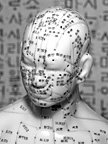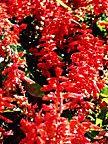
Not a subscriber?
Unsubscribe
Update e-mail address
October 2011 [Volume 10, Issue 10]
To Your Health is brought to you by:
In this issue of To Your Health:
By Sara Calabro, LAc
 Recent research from the Netherlands suggested that coffee, nose blowing, and sex can potentially trigger strokes in people with untreated brain aneurysms. The findings, while a little nerve wracking—apparently, one in 15 people develop brain aneurysms at some point in their life—are far from definitive. Just a few months ago, another study said coffee may decrease stroke risk.
Recent research from the Netherlands suggested that coffee, nose blowing, and sex can potentially trigger strokes in people with untreated brain aneurysms. The findings, while a little nerve wracking—apparently, one in 15 people develop brain aneurysms at some point in their life—are far from definitive. Just a few months ago, another study said coffee may decrease stroke risk.
Whether coffee is leading us down a path of peril or prevention remains unknown. However, regardless of the cause, unfortunately, strokes happen. Stroke symptoms vary widely in type and severity, but some signature problems include difficulty speaking and walking, one-sided numbness and paralysis, and mental confusion and anguish. Acupuncture can decrease these symptoms and help stroke victims cope with their new disabilities.
Herb of the Month – Red Sage Root (dan shen)
 What is red sage root? What is it used for?
What is red sage root? What is it used for?
Red sage root is one of the most popular components of Chinese herbal medicine. It is a member if the labitiae family. Native to the Mediterranean region, it is now cultivated throughout Japan and China. It grows to a height of 60 centimeters, with rough, oval-shaped leaves and different colored flowers, depending on the variety.
While red sage leaves are used (either fresh or dry) as a flavoring in many foods, particularly sausage and poultry, the rhizome and root are used medicinally. The root is harvested in autumn and early winter, washed clean, and dried in the sun to be used either raw or after being fried with wine.
In traditional Chinese medicine, red sage root is considered bitter in flavor and slightly cold in nature, and is related to the Heart and Liver meridians. It promotes blood circulation, which helps treat irregular menstruation, dysmenorrhea and amenorrhea; removes heat from the blood (to relieve inflammation); and tranquilizes the mind. It is often used in combination with other herbs, such as peony, Chinese angelica, sandalwood and turmeric to enhance its qualities.
How much red sage root should I take?
The standard dosage of red sage root to be used depends on the condition being treated. Generally, the dosage of red sage root varies between 5 and 15 grams per day, decocted for oral intake. It should be used after being fried with wine to promote blood circulation.
What forms of red sage root are available?
Red sage root is available either whole (either raw or fried) or as a powder.
What can happen if I take too much red sage root? Are there any interactions I should be aware of? What precautions should I take?
Red sage root counteracts the effects of black false hellebore root, so it should not be taken in conjunction with this herb. Because it can dilate some blood vessels and resist coagulation, patients taking blood thinning medications should consult with a health care provider before taking red sage root. As always, make sure to consult with a qualified health care provider before taking red sage root or any other herbal remedy or dietary supplement.
Question about Hip Flexor Injuries: Can acupuncture help with a hip flexor injury?
Answer: Yes. Most muscular injuries can be helped to repair and be less painful. You need to see an acupuncturist to know about your specific injury.
Unsubscribe
Thank you for subscribing to To Your Health. If you have received
this newsletter in error or wish to unsubscribe, you may remove your name
from our e-mail subscription list at www.acupuncturetoday.com/newsletter/TYH/unsubscribe.php.
Update your e-mail address
To update the e-mail address your newsletter is sent to, click here.
If you have any questions regarding your subscription, please complete this form at www.acupuncturetoday.com/newsletterhelp/TYH.
